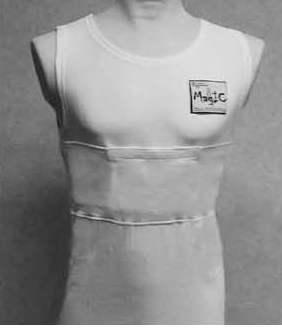Wearable Monitoring

Monitoring a crew member’s biomed data without disturbing them during their daily business in space is a critical aspect of acquiring a vast amount of data needed for various studies in progress aboard ISS. Wearable Monitoring will validate a new cloth vest that has built-in systems that measures the astronaut’s heart rates and breathing patterns during sleep without waking them up or reducing sleep quality. The vest is a lightweight design with silver wires and sensors embedded into the fabric making it more comfortable to wear than a sensor harness. A similar experiment ran on the Russian Segment of ISS in recent years.
The overall goal of the first run of the Wearable Monitoring experiment is an assessment of astronaut’s sleep quality in the space environment. The system monitors heart and breathing activity, skin temperature, body accelerations, and indices of cardiac mechanics. These parameters will be used for an assessment of sleep physiology to understand the underlying mechanisms of poor sleep quality that is reported by many astronauts who are performing space missions.
Mechanisms of deterioration of sleep quality in microgravity are essentially unknown. Hypotheses suggest that autonomic subcortical arousals in the brain can cause a loss of sleep quality. These activations of the autonomic nervous system might be influenced by changes in cardiac mechanics caused by exposure to microgravity. Gathering data on cardiac mechanics during sleep and associated parameters may shed light on physiological mechanisms responsible for poor sleep quality in space.
